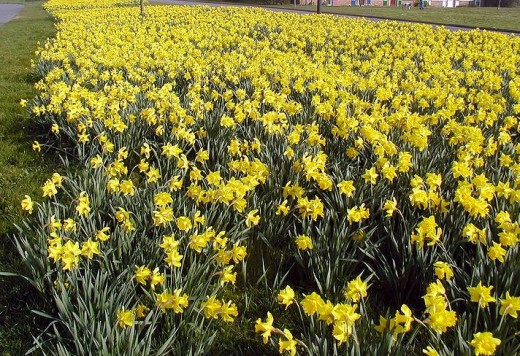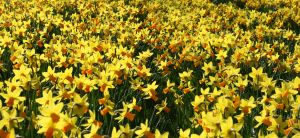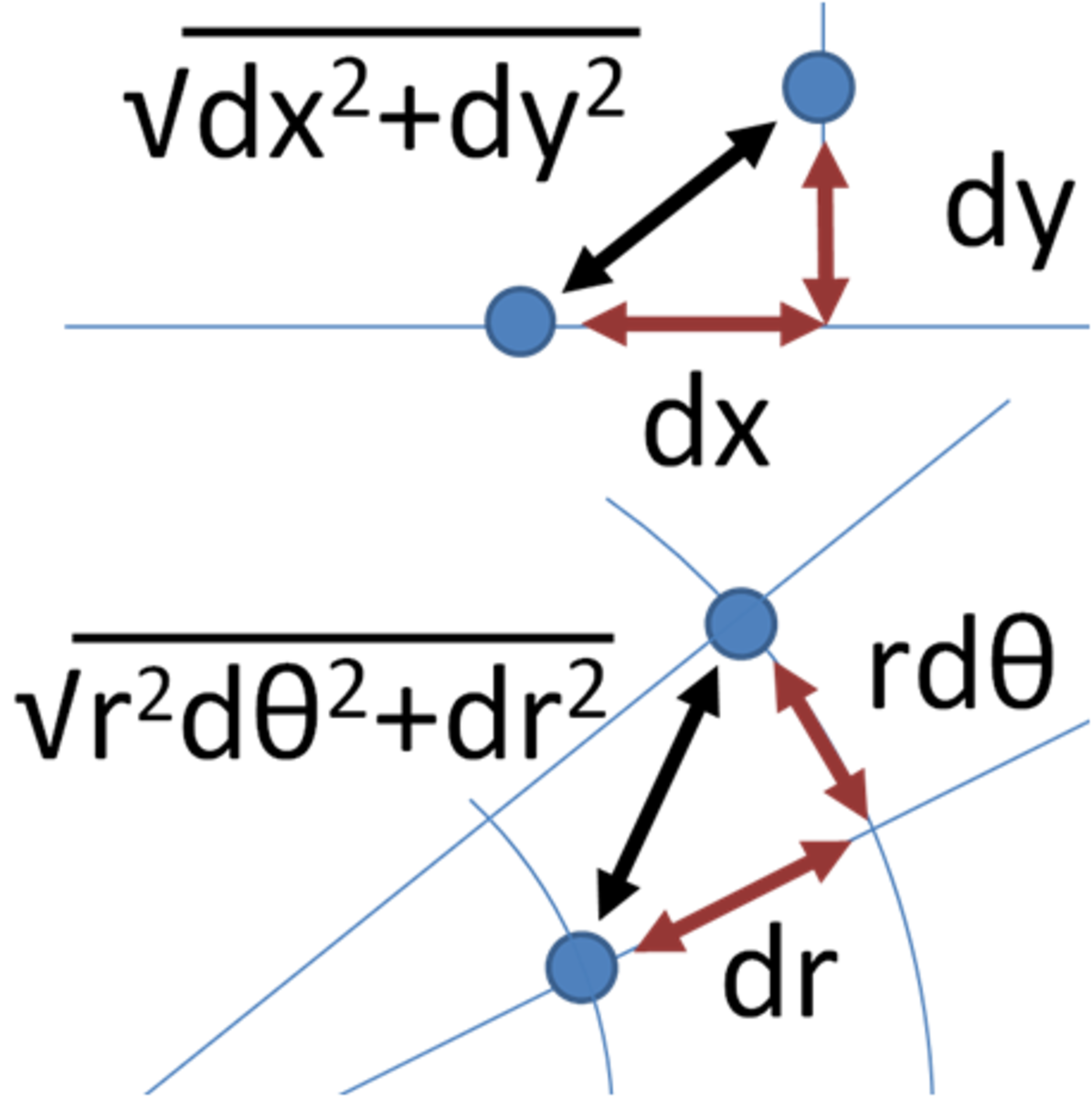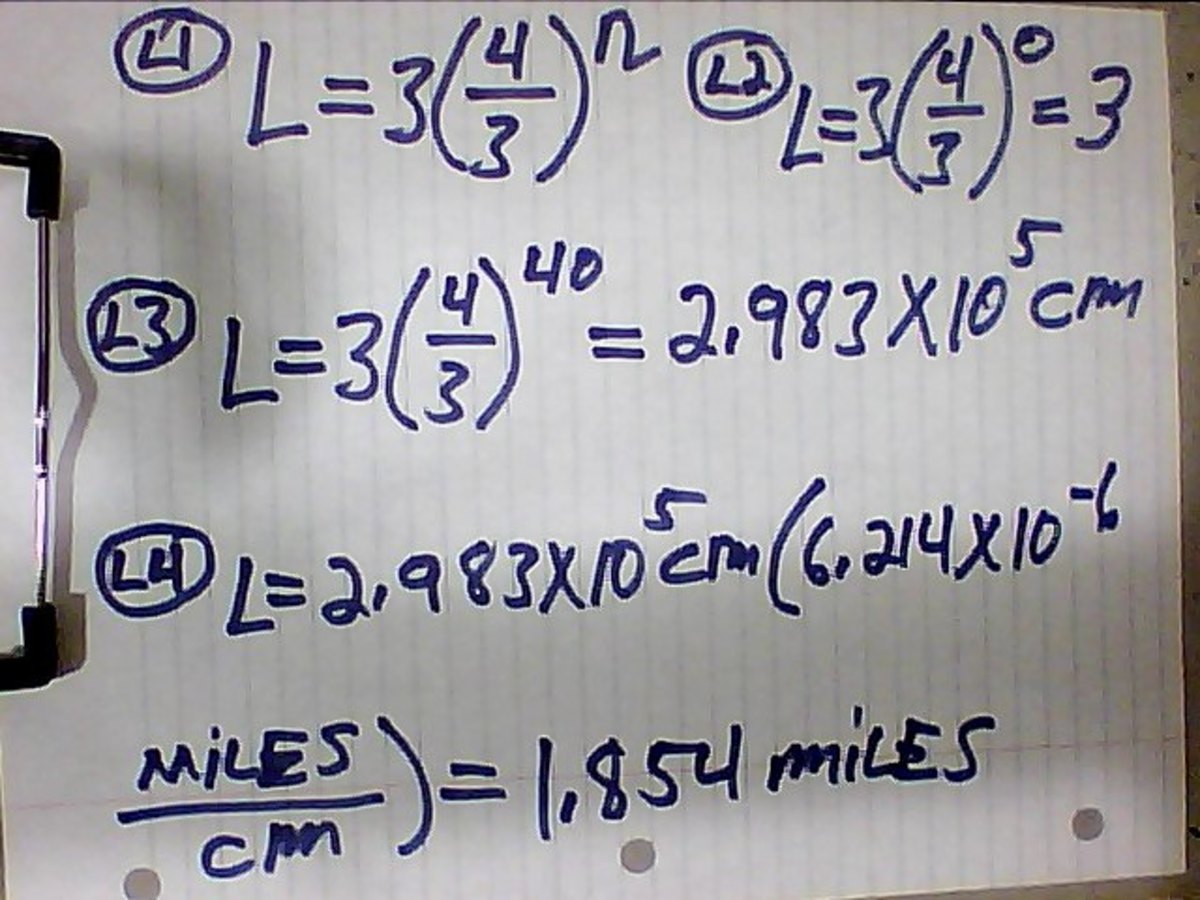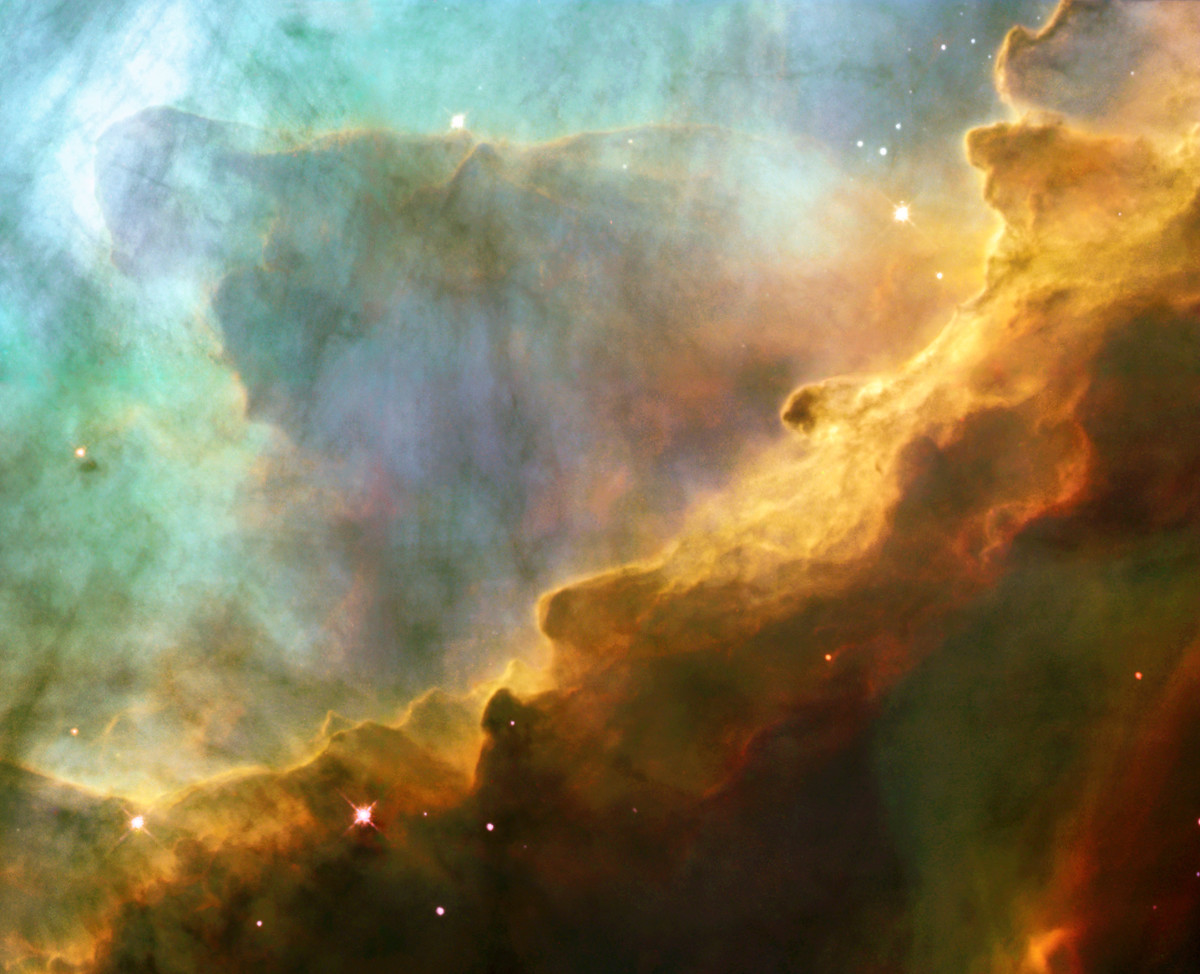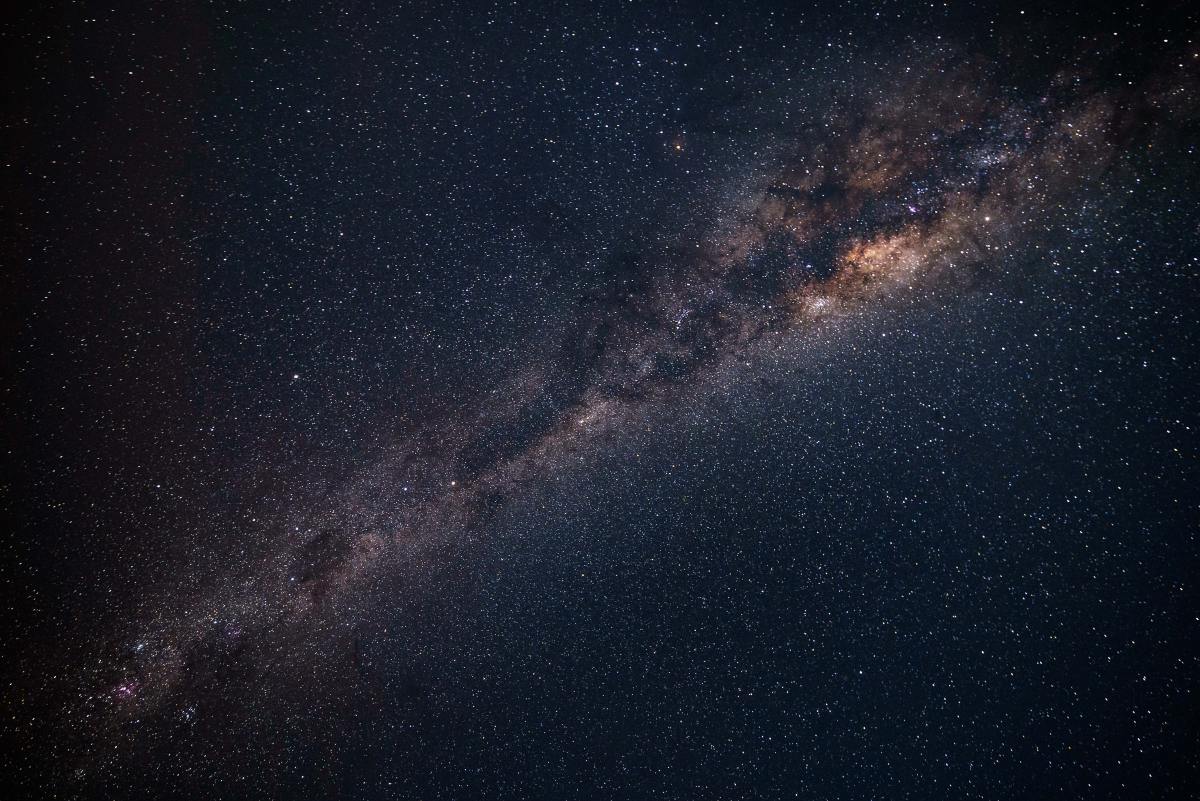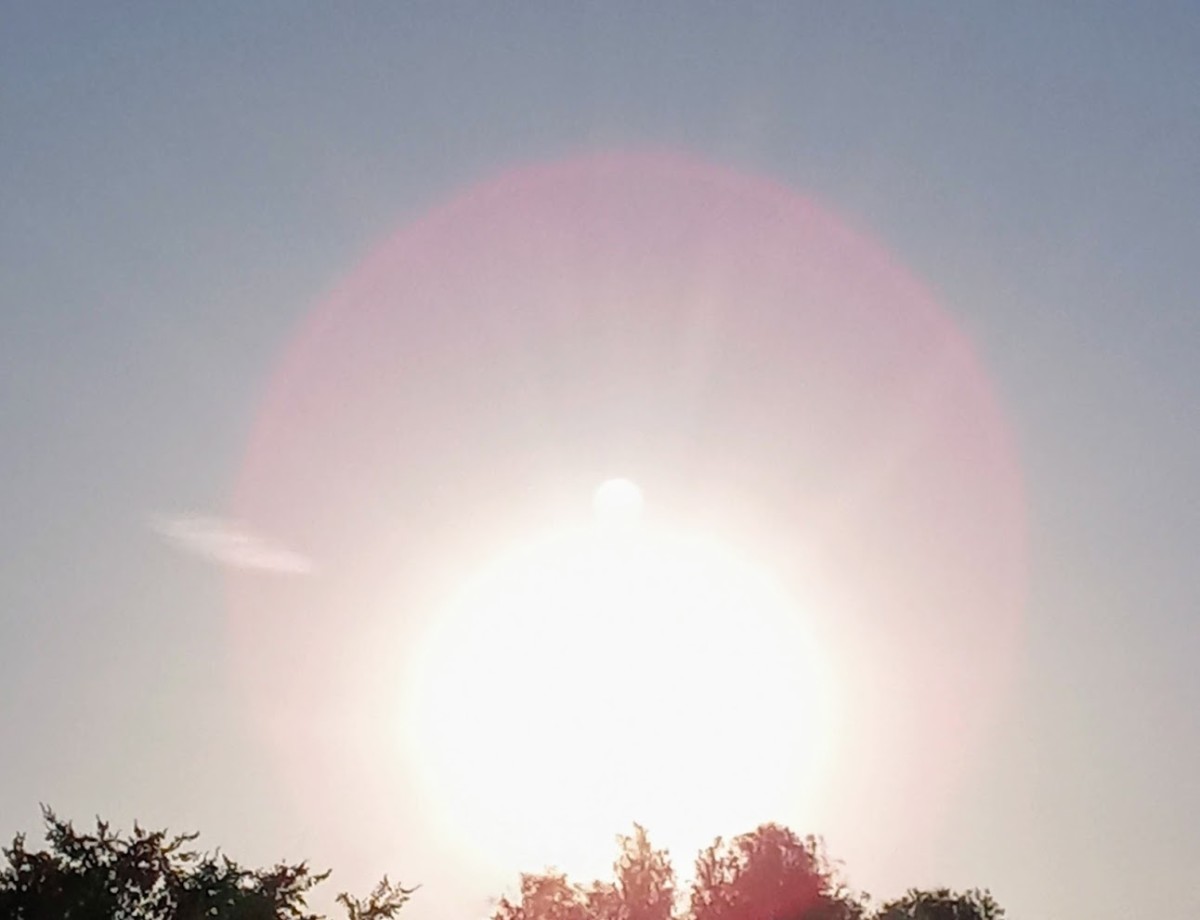Poetry and Mathematics - Daffodils and Stars in Fractal Iterations
Photograph of the Milky Way Galaxy
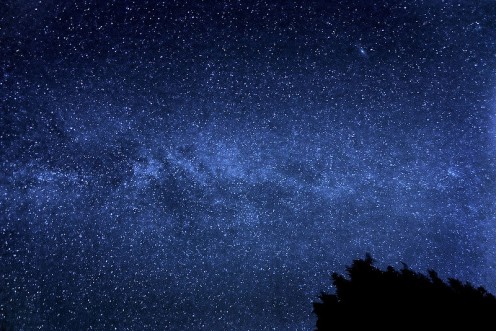
What a desolate place would be a world without a flower! It would be a face without a smile, a feast without a welcome. Are not flowers the stars of the earth, and are not our stars the flowers of heaven?
-- Mrs. Clara Lucas Balfour (1808 - 1878), British temperance leader
The Geometry of Nature in Land and Sky
The first realizations that strike me after a quick read of the poem The Daffodils by William Wordsworth is not only the fact that it is a lyrical poem of nature , but that it compares two fractal iterations :
- Bright stars in a field of the cosmos and
- Bright yellow daffodils in a field of grass.
These two are similar, but what have they to do with one another?
The concept of fractals is often taught visually with recurring patterns in nature, such as a spiral staircase mimicking the interior structure of a chambered nautilus. Another fine example is the similarity of the form and pattern of certain branch and leaf structures of tree species with the exact pattern of interior human brain structures.
Why is this important, we might ask - what of it, what does it mean?
The fractal equation is one of the dew or perhaps the only mathematical function that includes no margin at error at all. No "+/- 1", no "Confidence Interval", no "close to" or "approaching" --Change one element of a fractal equation and one gets a whole new solution, graph, structure...Some scientists and clerics apply this fact as evidence that since our universe is mathematically based, then an organized mind must be doing the mathematical organizing portion at the foundation of it. Others contend that our Universe simply happens to be a closed set based on one group of mathematics, all by chance; other universes experience different mathematics, laws of physics, and music.
ANALYSIS: Regardless of belief, the importance of this fractal notion is that a strong similarity was observed by the poet between the Milky Way and his Field of Daffodils.
Daffodils Of a Field
Click thumbnail to view full-size

"Daffodils", written in 1804
Second known title: I Wandered Lonely As a Cloud
I WANDER'D lonely as a cloud
That floats on high o'er vales and hills,
When all at once I saw a crowd,
A host, of golden daffodils;
Beside the lake, beneath the trees,
Fluttering and dancing in the breeze.
.
NOTE: This poem contains four stanzas of 6 lines each, all written in iambic tetrameter, one of the the first poetic meters students lean in school. This does not make it any less useful and the meter does not need to be "sing-song" given the proper wording applied to it.The rhyme is also simple: ABABCC, recurring every 6 lines. The rhyme in this poem is a bit annoying, except in the last two stanzas -- There, the rhymes sound much less like a consistent "hey hey hey" and lend themselves to a sound more thoughtful.
.
Continuous as the stars that shine
And twinkle on the Milky Way,
They stretch'd in never-ending line
Along the margin of a bay:
Ten thousand saw I at a glance,
Tossing their heads in sprightly dance.
.
NOTE: The loneliness of the unconnected (to anything else) cloud on his own in the sky is squashed to his delight by "ten thousand" bright flowers below him, remind him of the stars above him in the night sky in which he will proceed as darkness drops. He is not alone after all, but sandwiched day and night by bright millions, by velvet night and lush green space.
.
The waves beside them danced; but they
Out-did the sparkling waves in glee:
A poet could not but be gay,
In such a jocund company:
I gazed -- and gazed -- but little thought
What wealth the show to me had brought:
.
For oft, when on my couch I lie
In vacant or in pensive mood,
They flash upon that inward eye
Which is the bliss of solitude;
And then my heart with pleasure fills,
And dances with the daffodils.
.
-- William Wordsworth (b.1770 - d.1850).
.
NOTE: The poem is romantic and sparks positive emotions that ease loneliness - of happiness and joy, and of valuable, warm memories in the future. The daffodils were so joyous and lively in their dance that they out performed the rather stormy waves in the bay alongside which they grew. All nature was dancing as the poet saw these features in a walk through its wonders with his beloved sister in 1802. Her journal entries about this walk and her observations of the scenery inspired Wordsworth to write the poem, published later, in 1807, and revised in 1815; overlapping with at least a portion of years of Regency England.
Art Nouveau Portrait of the Milky Way
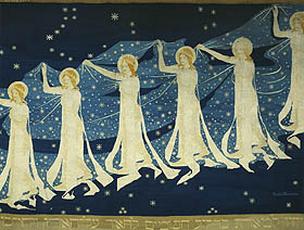
A Sky of Bright Flowers
The Reality of the Milky Way - Still Poetic
- The Multiwavelength Milky Way
These pages bring together several data sets to visualize images of our Milky Way galaxy in various wavelength regions. - NASA - Milky Way: A Crowded Neighborhood
At least 300,000,000,000 neighbor stars, plus planets and other objects.
"The Milky Way" by Frida Hanson
The image above is a beautiful painting of a classic legend. The interesting story is the legend of the Milky Way, carried through the night sky by goddesses. The lovely portrait of female form and sky was painted by Frida Hanson (1855 - 1931).
The repetition of female figures and folds of filmy starry fabric create a a type of fractal iterations. Interestingly, in Asian culture, the night is female, as is the concept "yin", the night being an era of regeneration for tomorrow's actions underneath the sun, a "yang" energy.
ANALYSIS: Women are also referred to as "flowers" in the literature and poetry if the world, thus connecting all of the concepts we have as three iterations of the same theme:
- Daffodils,
- Women ("flowers") carrying the stars of the Milky Way at night, and finally,
- Possibilities of stars themselves being flowers in the velvety field of night.

